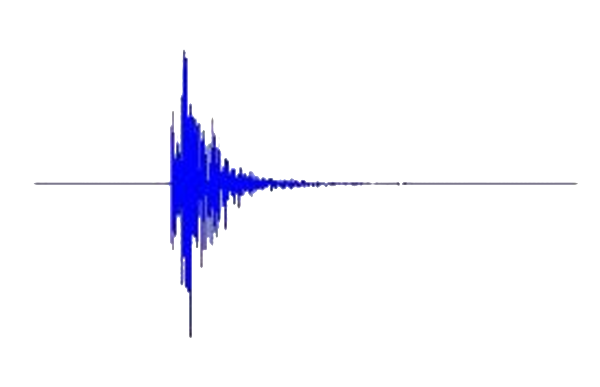This is a post that I originally wrote in June 2007. It contains sound files that let you hear the crashings and rumblings that go on beneath the ground near Volcán de Colima, Mexico. I’m reposting it today because a) it deserves a wider audience, b) I’m off to map the deposits of the Hekla 4 eruption in Iceland soon and don’t have time to write a fresh post this month, and c) Mexican earthquakes are in the news today.
I hope that you enjoy it.
Earthquakes in Colima
We had a couple of earthquakes last week. The first was magnitude 5.2 and took place at about 05.30hrs on Wednesday morning. It was the talk of the town the next day, but a healthy dose of tequila the night before had ensured that we slept straight through it. One of the aftershocks came at lunchtime the following day and was quite impressive as it rattled window panes and shook me in my chair. It was a magnitude 4.2, which isn’t huge but the epicentre was only 25 km away so it still felt strong.
The people of Colima get rightly scared when the earth shakes. In 2003 there was a magnitude 7.8 that flattened buildings all across the town and killed a number of people. Considering that the extra energy released by each grade on the Richter scale is 10x larger than the previous and that the 2003 earthquake was therefore ~1000x more powerful than the one that we felt, it must have been pretty scary.
Seismicity as sound
On Friday I discovered how to convert the traces from the seismograms into sound files so that we can ‘listen’ to the earthquakes. Volcano seismologists have been doing this sort of thing as part of their analysis of the seismic signals for ages. They use it to detect changes within the plumbing of volcanoes that may one day be a method of predicting eruptions. I did it because the results sound cool. The sounds produced are not real – they are vibrations of the Earth that have been sped up 50x so that we can hear them with our ear. But you can clearly tell the difference between various types.
Click the images to hear the sounds.
**If you get a taste for seismicity as sound, check out this post on the Highly Allocthonous blog that demonstrates the power of last year’s Japan earthquake.**
Earthquake
 The trace above is from a tectonic earthquake. It sounds like a cross between someone slamming a door and the rumble of distant thunder. This is the noise of big slabs of rock grinding past each other in a sudden jerk.
The trace above is from a tectonic earthquake. It sounds like a cross between someone slamming a door and the rumble of distant thunder. This is the noise of big slabs of rock grinding past each other in a sudden jerk.
Explosion
 This trace is from an explosion at the volcano. It is the sound of pressurised gases explosively bursting free from the crater, carrying ash and rock fragments with them. It is easy to hear the energy tail off as the pressure is released.
This trace is from an explosion at the volcano. It is the sound of pressurised gases explosively bursting free from the crater, carrying ash and rock fragments with them. It is easy to hear the energy tail off as the pressure is released.
Harmonic tremor
 A third kind signal comes from harmonic tremor. It sounds a bit like whale-loving or a broken trumpet. This type of signal is a bit special, as it is thought to be caused by seismic waves travelling within a gas- or fluid-rich conduit beneath the volcano. Different frequencies are amplified or cancelled-out like sound waves in a music instrument. Volcano seismologists use the changing frequencies of the signals to estimate things like pressure beneath the ground.
A third kind signal comes from harmonic tremor. It sounds a bit like whale-loving or a broken trumpet. This type of signal is a bit special, as it is thought to be caused by seismic waves travelling within a gas- or fluid-rich conduit beneath the volcano. Different frequencies are amplified or cancelled-out like sound waves in a music instrument. Volcano seismologists use the changing frequencies of the signals to estimate things like pressure beneath the ground.



Pingback: Stuff we linked to on Twitter last week | Highly Allochthonous
Pingback: Bárðarbunga – waiting and watching | Volcan01010
Pingback: Recommended sources of information on Katla volcano | Volcan01010